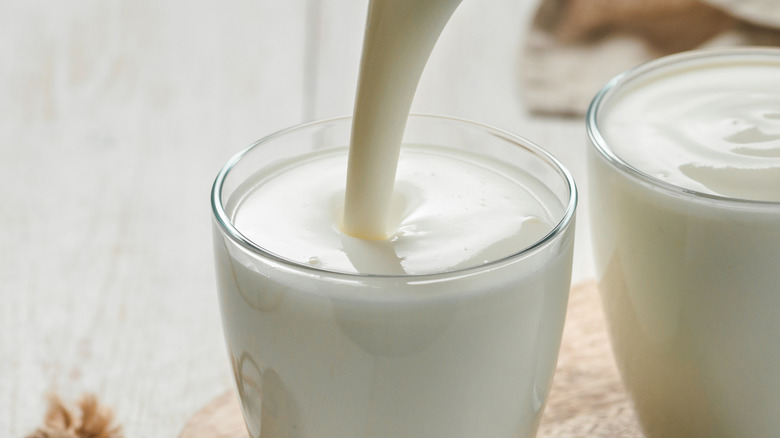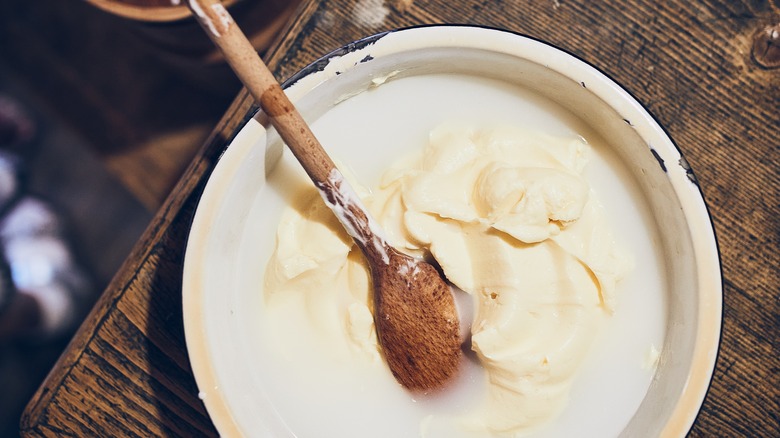Is There A Difference Between Store-Bought And Home-Churned Buttermilk?
If you're confused by what a recipe is asking for when it calls for buttermilk, you aren't alone. Over time, buttermilk has taken on several culinary meanings — it can refer to curdled milk, residual milk after churning cream, or a tangy cultured bottled milk product we see in grocery stores. In fact, store-bought and home-churned may both be called buttermilk, but that's like comparing apples to oranges. They both produce very different kinds of milk, which means they can rarely be substituted for one another. In fact, Southern Living recommends using store-bought buttermilk if a recipe calls for the ingredient.
While both homemade and store-bought buttermilk shares the common characteristic of being slightly acidic milk, they are also very different as well. For one, store-bought buttermilk is more acidic than home-churned, which means a lot of recipes call for baking soda to even things out. As a result, using homemade buttermilk could throw off the recipe. The high acidity levels drastically change the chemical makeup of the store-bought liquid, so if you're following a baking recipe like Southern-style biscuits or pancakes that calls for buttermilk, opt for store-bought. But the two different types of buttermilk also differ in creation, taste, texture, bacteria, and chemical properties.
What are the major differences?
Modern home-churned buttermilk is essentially a pioneer style. You churn full-fat cream until the solid separates from the liquid, leaving you with what is known as buttermilk. You can keep the reserves as is or leave them to ferment. The Pioneer Woman recommends adding lemon juice or vinegar to safely make the liquid curdle, which creates solids in the milk. But you'll probably still notice that it's a pretty thin liquid, nothing like store-bought buttermilk.
Homemade buttermilk is great in ranch dressing because it's mixed with additional fats and acids, and the emulsification process will make it creamier and thicker. Home-churned buttermilk is slightly sweet, making it a rich addition to potatoes, sauces, and soups. When you make your own buttermilk, you also make butter, which opens up a whole world of possibilities with flavored compound butters and Instagram-worthy butter boards.
@nytcooking Here are Alexa Weibel's rules for substituting buttermilk: • For 1 cup buttermilk, add 1 tablespoon fresh lemon juice (or light vinegar, such as white vinegar, white wine vinegar or Champagne vinegar) to a measuring cup and add enough milk to reach 1 cup. • Alternately, thin one part yogurt, sour cream or other creamy dairy product with one part milk, or thin two parts yogurt or other creamy dairy product with one part water. #nytcooking
Advertisement
What we know as grocery store, ready-made buttermilk undergoes a totally different process, and is actually better described as "cultured buttermilk." Cultured buttermilk is actually cream or milk that has had bacteria and probiotics added to it. According to Rose Bakes, cultures are what make store-bought buttermilk luxuriously thick and creamy and give it a wonderfully tangy flavor that makes it well-suited to all sorts of cuisine.

